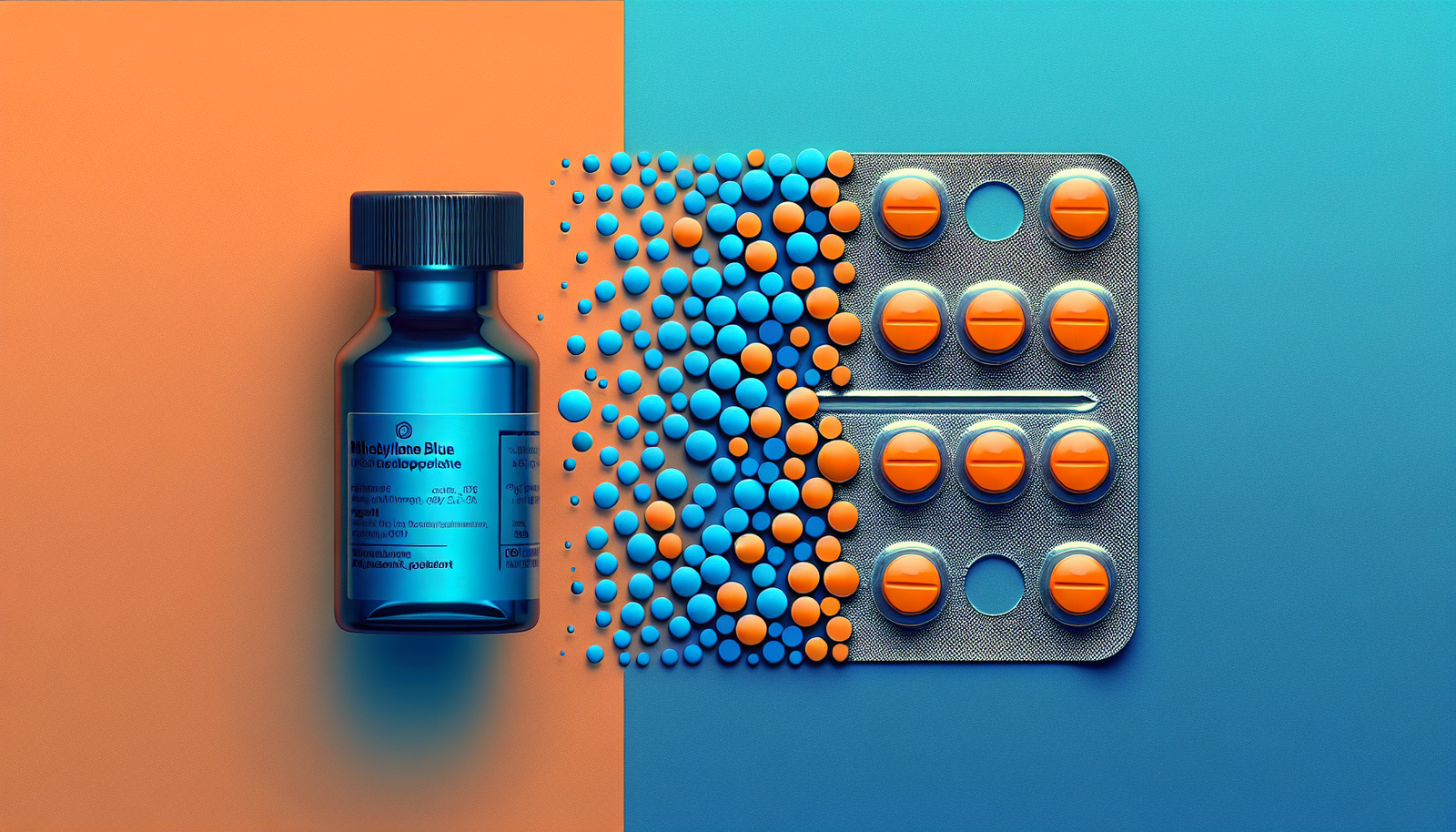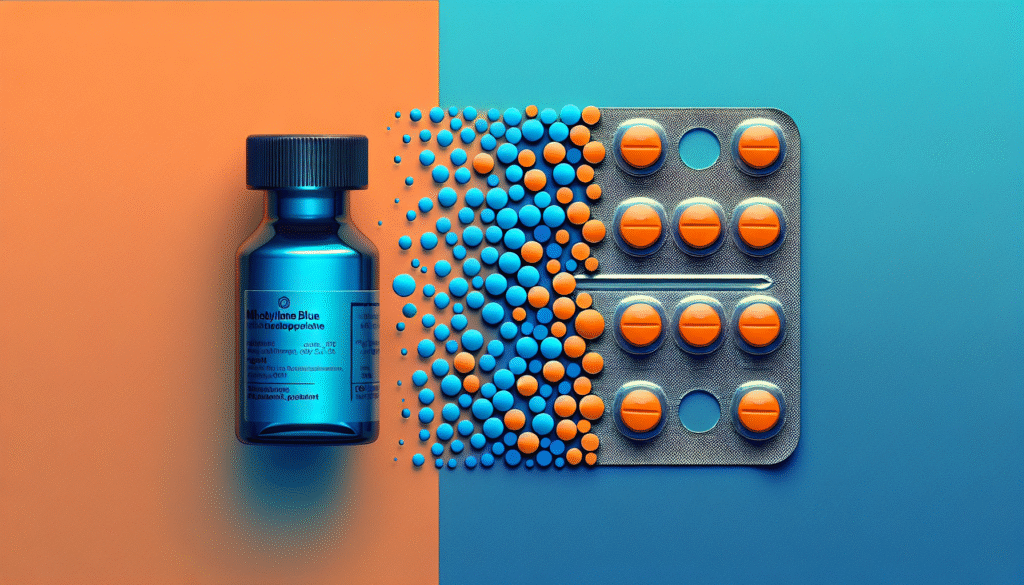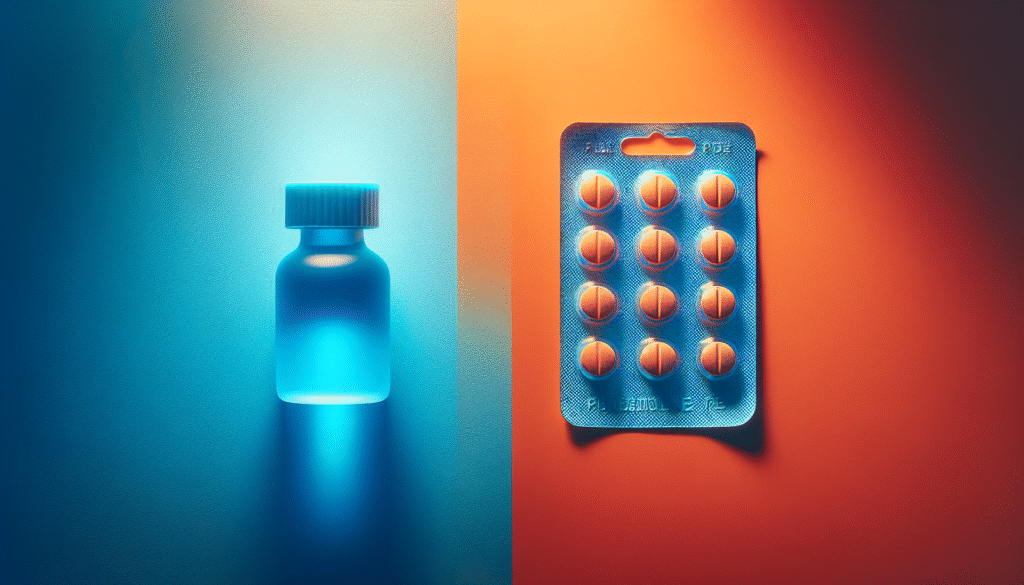
What factors influence your ability to focus and remain productive throughout the day? As the demands of modern life increase, the quest for effective cognitive enhancers becomes more relevant. You may have heard of Methylene Blue and Adderall—two substances often discussed in the context of enhancing focus and mental clarity. Understanding the properties, benefits, and limitations of these options can help you make informed decisions regarding your cognitive health.

Understanding Methylene Blue
Methylene Blue, originally used as a dye in the textile industry, has garnered attention in the medical community for its potential nootropic (cognitive-enhancing) properties.
History of Methylene Blue
Initially synthesized in 1876, Methylene Blue found its role in the medical field as a treatment for methemoglobinemia, a condition where the blood does not carry oxygen efficiently. Over time, researchers discovered its potential benefits for cognitive function. The underlying reasons involve its ability to cross the blood-brain barrier, thus influencing brain chemistry.
Mechanism of Action
Methylene Blue has a multifaceted mechanism of action, primarily impacting mitochondrial function. It serves as a redox agent, facilitating electron transport within mitochondrial membranes. This process promotes ATP (adenosine triphosphate) production, leading to enhanced energy availability in neurons. Increased ATP levels can enhance neuronal function and, subsequently, improve focus and cognitive clarity.
Potential Benefits
- Cognitive Enhancement: Some studies suggest that Methylene Blue may improve memory, learning capacity, and overall cognitive function.
- Neuroprotection: Research indicates that Methylene Blue may protect neural cells from oxidative stress, potentially reducing the risk of neurodegenerative diseases.
- Mood Regulation: Emerging studies propose that Methylene Blue might influence mood through its effects on neurotransmitters.
Risks and Side Effects
While Methylene Blue has potential benefits, it is essential to consider the associated risks:
- Dosage Concerns: High doses can lead to toxicity and adverse effects like agitation, confusion, and dark urine.
- Interactions: Methylene Blue can interact with certain medications, particularly those affecting serotonin levels, which can precipitate serious conditions like serotonin syndrome.
Understanding Adderall
Adderall, a prescription medication, is primarily utilized in the treatment of Attention Deficit Hyperactivity Disorder (ADHD) and narcolepsy.
Composition and Drug Classification
Adderall is a combination of amphetamine and dextroamphetamine, classified as a central nervous system stimulant. It works by increasing the availability of neurotransmitters in the brain, particularly dopamine and norepinephrine. By enhancing synaptic activity, Adderall can improve attention and focus.
Mechanism of Action
The primary action of Adderall revolves around the promotion of dopamine and norepinephrine release in the brain. Higher levels of these neurotransmitters facilitate better concentration and cognitive performance, especially in individuals with ADHD.
Potential Benefits
- Increased Focus: Numerous studies indicate that Adderall can significantly enhance focus and concentration, especially in individuals diagnosed with ADHD.
- Improved Motivation: Users often report heightened motivation and task engagement, which can be beneficial in both academic and professional settings.
- Quick Onset of Action: Adderall typically takes effect within 30 to 60 minutes, offering rapid relief from attention-related difficulties.
Risks and Side Effects
While Adderall appears effective, it also comes with a range of potential side effects:
- Cardiovascular Issues: Stimulants can increase heart rate and blood pressure, posing risks for individuals with pre-existing conditions.
- Dependency: There is a potential for misuse and dependency, particularly in individuals who may misuse the medication for its cognitive-enhancing effects.
- Withdrawal Symptoms: Upon discontinuation, individuals may experience mood swings, fatigue, and difficulties in concentrating.
Comparative Analysis of Methylene Blue and Adderall
When comparing Methylene Blue and Adderall, it is essential to consider personalized factors, including your specific cognitive needs, underlying health conditions, and lifestyle.
Mechanisms of Action
The different mechanisms of action warrant attention when evaluating their effects on focus. Methylene Blue primarily enhances mitochondrial function and neglects direct neurotransmitter manipulation, while Adderall’s mechanism hinges on increasing dopamine and norepinephrine levels.
| Aspect | Methylene Blue | Adderall |
|---|---|---|
| Mechanism | Enhances ATP production | Increases dopamine and norepinephrine |
| Onset Time | Variable (depends on formulation) | 30-60 minutes |
| Duration of Effects | Up to several hours | 4-12 hours (depending on formulation) |
| Dependency Risk | Low | Moderate to high |
Efficacy in Enhancing Focus
Both substances present a compelling case for enhancing focus; however, their effectiveness may be context-dependent. Adderall is particularly effective for individuals with ADHD, while Methylene Blue may serve as an innovative alternative for those seeking cognitive enhancement without reliance on traditional stimulants.
Personalization and Individual Response
Your decision to use Methylene Blue or Adderall should account for personal factors, including:
- Medical History: Pre-existing conditions may limit the use of stimulants like Adderall, while Methylene Blue may be a safer alternative for individuals sensitive to stimulants.
- Current Health Status: Your overall health can dictate how your body metabolizes and reacts to each substance.
- Cognitive Goals: Identify your primary focus-related issues. Are you seeking enhancement in general cognitive capacity, or are you addressing a specific condition like ADHD?
Potential Alternatives
While Methylene Blue and Adderall are popular discussion points, it is advisable to consider other alternatives for cognitive enhancement:
- Caffeine: A well-known stimulant that boosts alertness and can improve focus in the short term.
- L-Theanine: Often used in conjunction with caffeine, L-Theanine may promote relaxation without drowsiness, enhancing cognitive function.
- Natural Nootropics: Substances like Rhodiola Rosea and Bacopa Monnieri have garnered attention for their potential cognitive-enhancing properties.
Conclusion
Weighing the benefits and drawbacks of Methylene Blue and Adderall in the context of cognitive enhancement calls for a nuanced understanding of your needs and circumstances. If you are someone seeking better focus, consider the unique mechanisms, potential benefits, and risks associated with each substance. Proper guidance from a healthcare professional can also prove invaluable as you navigate the landscape of cognitive enhancers, ultimately helping you make an informed choice that aligns with your health goals.
